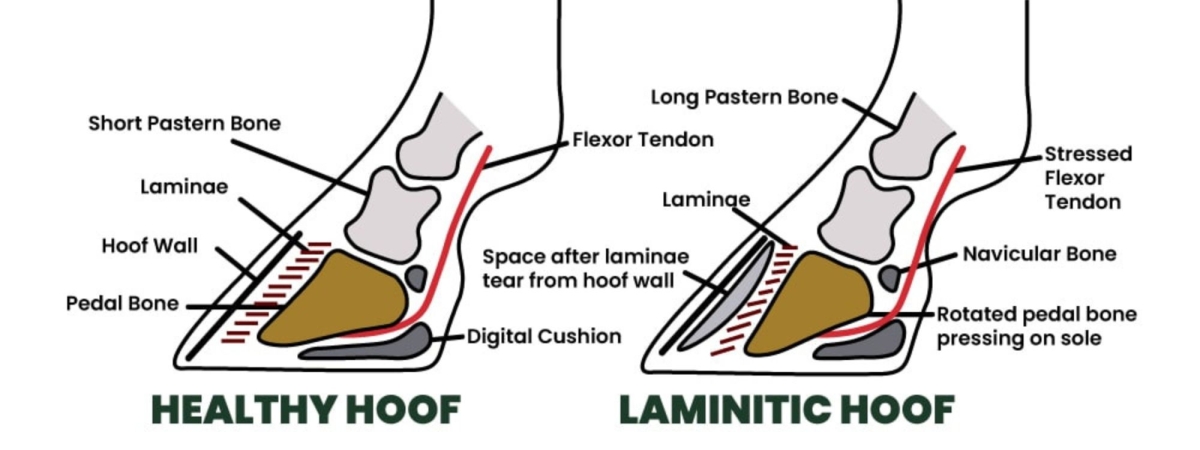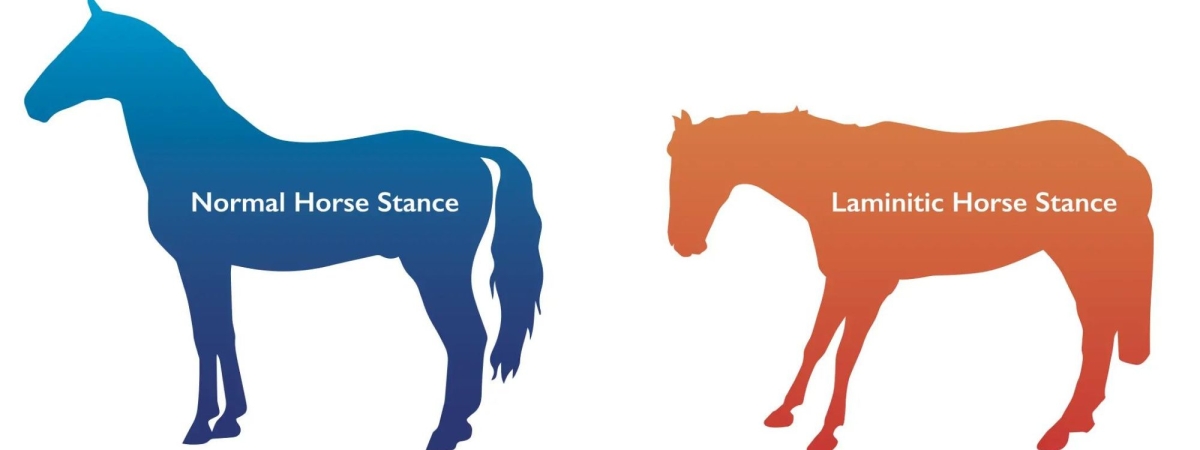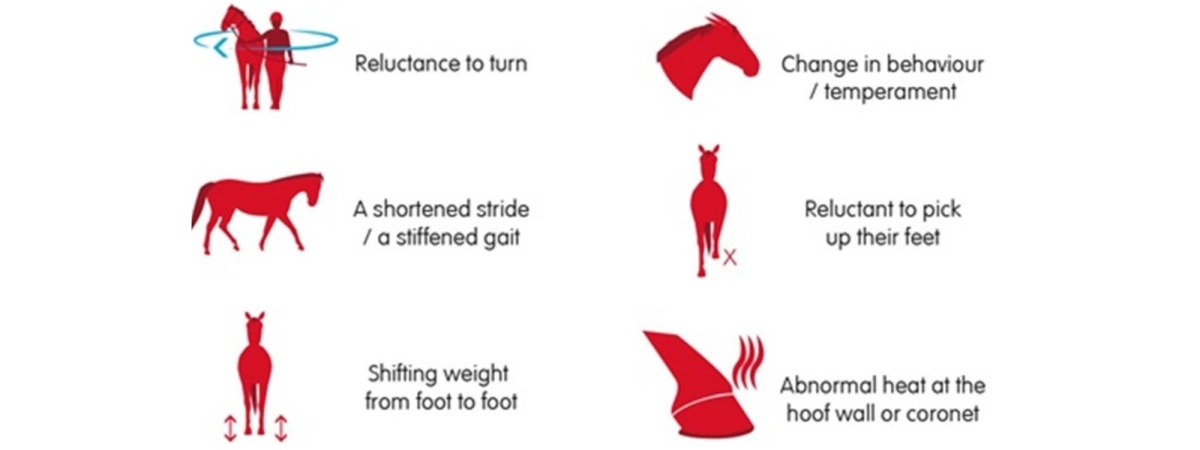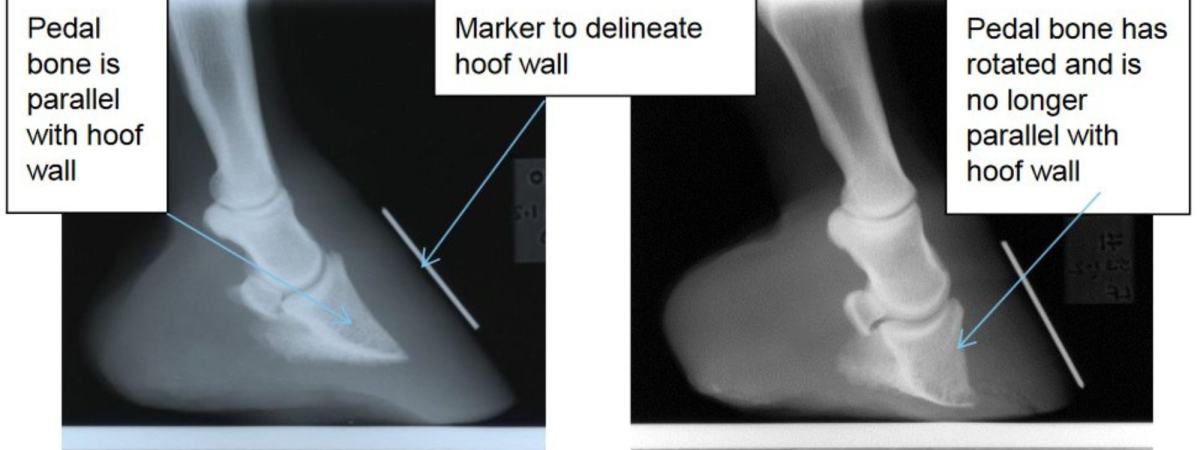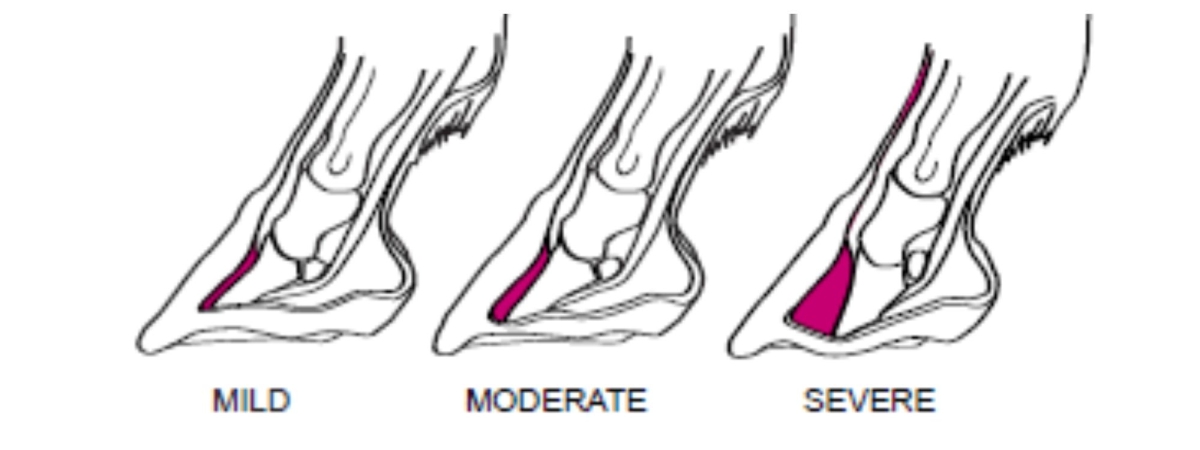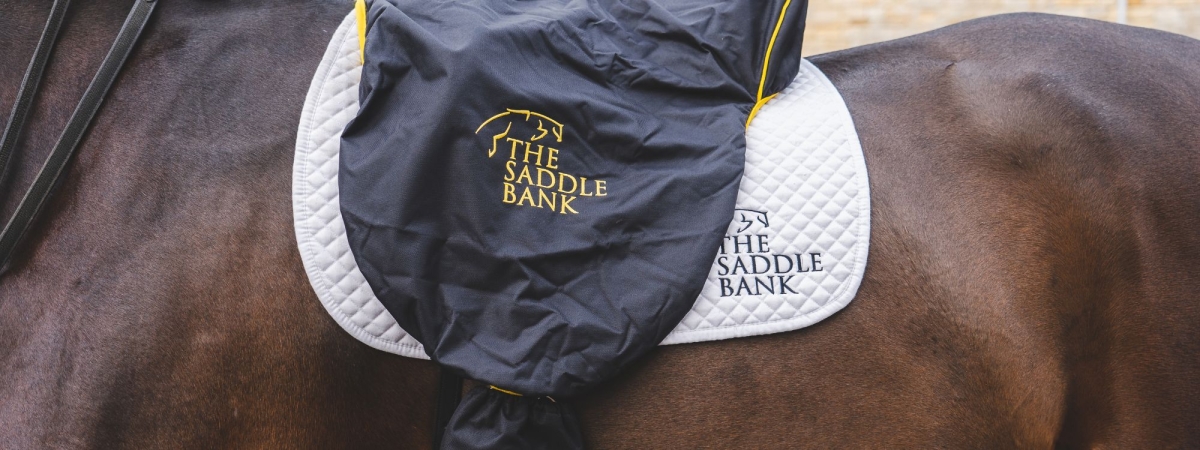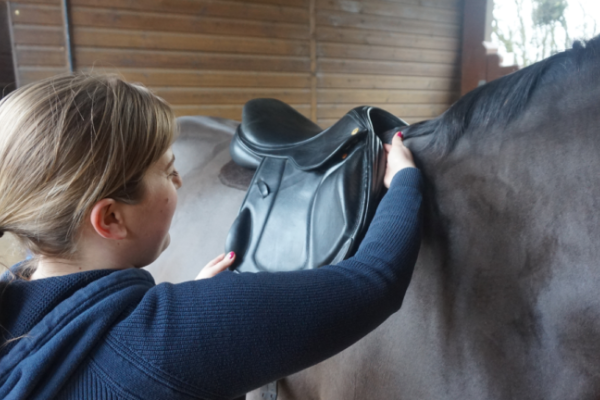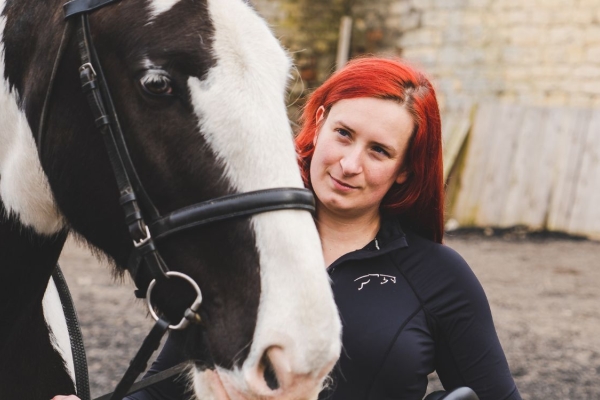What is Laminitis?
Laminitis is a common, extremely painful and frequently recurrent condition that affects the hooves of horses, ponies and donkeys. It occurs when there is inflammation of the laminae, which are the tissues that connect the hoof to the bone. This can result in the pedal bone rotating or sinking within the hoof under the weight of the horse. In extreme cases this can result in penetration the sole of the foot by the pedal bone. More than 7% of equine deaths are linked to the laminitis, with many animals having to be euthanised.
In this blog we are going to look at the 7 things you need to know about laminitis in horses and ponies.
Causes:
Laminitis can be caused by a variety of factors, including obesity, exccessive sugar intake, reaction to serious infecton and weight bearing on sipportiung limbs whilst recovering from injury. Laminitis can also commonly be results of endocrine diseases such as equine metabolic syndrome (EMS) Cushing's disease, pituitary pars intermedia dysfunction (PPID).
Symptoms:
The symptoms of laminitis can vary depending on the severity of the condition and the individual horse/pony, but may include some of the below symptoms:
- Pain and stiffness in the lower limb
- Lameness or reluctance to move
- Heat in the hooves
- Increased digital pulse
- Decreased appetite
- Dehydration
- Change in stance/rocking whilst stood
Diagnosis:
Laminitis is classed as a medical emergency by vets so should be seen by a vet so they can be diagnosed and treated if you suspect it may be Laminitis from the symptons mentioned above.
- A laminitis diagnosis is usually based on the clinical signs being displayed
- X-rays may be taken if there is concern that the pedal bone has sunk or rotated, or if the animal is not improving despite appropriate therapy
- Blood tests may be performed in cases where an underlying endocrine disease is suspected.
Treatment:
Treatment of laminitis depends on the severity of the condition and may include:
* Rest and limited exercise - box rest will be one of the first treatments for laminits to help limit movement of the pedal bone.
* Foot support, your vet might work alongisde your farrier in regards to pads and foot support,. With the horse/pony being on box rest a deep bed covering the whole stable to increase comfort for the horse or pony.
* Dietary changes to reduce sugar and starch intake, rather than grass a poor quality low sugar forage (hay) should be fed, it may even need to be soaked to remove as much nutritional value as possible. If fibre based feeds are used such as chaff or sugar beet these should be unmollassed.
* Supportive care, such as anti-inflammatory medications to control the pain and antibiotics if an infection is present. Sedatives such as Acepromazine has previously been used to increase the blood supply to the feet however it has been shown that it may be beneficial due to the use of it resulting in the horse/pony standing still or even laying down therefore taking weight off their feet.
Complications:
Laminitis itself is a precarious condition, but complications can make cases even more challenging to manage. Two of the most common complications vets face are injuries to the subsolar tissues (the soft tissue located between the coffin bone and the hard/keratinized sole, in front of the frog) and sole, such as coffin bone penetration and subsolar abscesses.
Prognosis:
The prognosis for horses with laminitis varies depending on the severity of the condition as well as the promptness and effectiveness of treatment.
In general, the earlier laminitis is diagnosed and treated, the better the prognosis. However, even with appropriate treatment, some cases of laminitis can have a poor prognosis, particularly if there are complications such as founder or laminitic pedal osteitis.
It can take weeks to months for a horse or pont to revcover from laminitis. A research study showed that 72% of animals were sound at trot after 8 weeks and 60% were back in work,
Prevention:
Prevention of laminitis is key, and includes maintaining a healthy weight, limiting grain/carbohydrate intake, and providing regular exercise. Regular farrier visits to ensure proper hoof care and trimming can also help prevent laminitis. Once an animal has had laminitis, they will be at an increased risk of getting it again. The current episode can be cured, but it is likely that laminitis will occur again at some point in the future. Management changes should be put in place to minimise the risk of a repeated episode.






